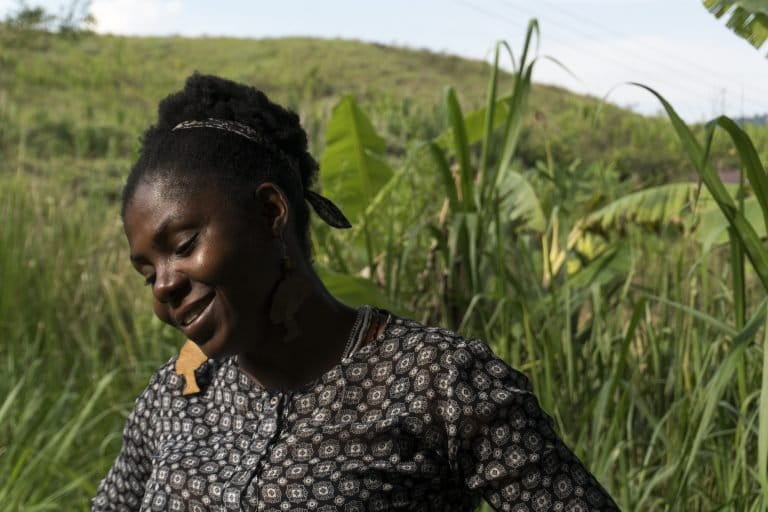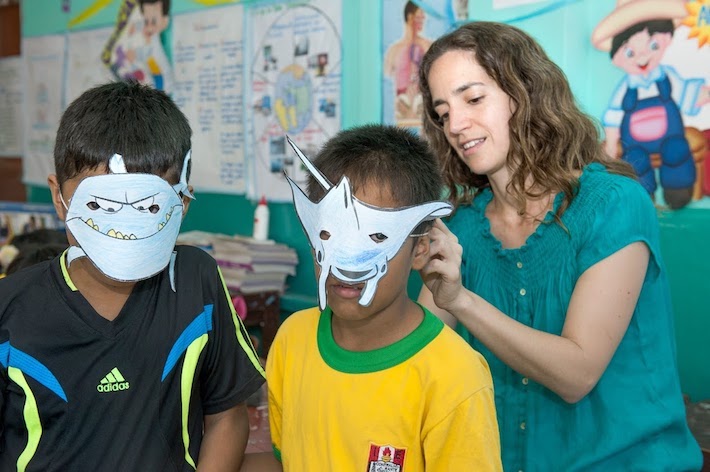Below are summaries of the most popular stories from our Spanish language service, Mongabay Latam, for the week of April 16 – 22. Among the top articles: Colombian activist Francia Márquez receives the Goldman Prize and Peruvian biologist Kerstin Forsberg wins the Whitley Award. And in Ecuador, a condor’s flight demarcates a protected area.
The image above from the vast Mongabay Latam archive, of Langaha madagascariensis, a species endemic to Madagascar – also known as the Leaf-nosed Snake, was the most popular this week on Latam’s social networks. It is believed that the particular shape of its face serves as camouflage to capture its prey.
Colombian leader Francia Márquez wins Goldman Prize for her fight against illegal mining

Among more than 80 Afro-Colombian leaders who have received death threats, Francia Márquez fearlessly confronted both illegal miners and the government. She is the third woman in the country to win the Goldman Environmental Prize. As a direct result of her work, all illegal mining in her southwestern town have ended. What hasn’t changed is that her life is still in danger.
An Andean condor chooses her own protected area in Ecuador

More than 34,000 hectares have been declared a protected area in southern Ecuador, thanks to a female condor named Chunka. After being fitted with a remote satellite tracker, Chunka was set free. The data she revealed led to the identification of the León River as a nucleus zone and essential area for the reproductive cycle of the condor in Ecuador.
Whitley Award 2018: Peruvian biologist wins the “Green Oscar” for protecting giant manta rays

Seven years ago, biologist Kerstin Forsberg made the decision to protect the giant manta ray that inhabit northern Peru. There are only two manta ray species in the world – the giant manta (Mobula birostris) and the reef manta (Mobula alfredi.) Giant manta rays can reach up to seven meters and weigh up to 2 tons. According to the Whitley Fund for Nature, it is believed that Peru and Ecuador host the largest manta ray populations in the world. Prior to Forsberg’s work, Peru was one of the few countries without specific rules to protect them.
Deforestation from petroleum industry threatens Ecuador’s Yasuní Park

According to indigenous communities and NGOs, state petroleum company Petroamazonas has exceeded the 300-hectare deforestation limit for hydrocarbon extraction in Yasuní National Park in northeast Ecuador. New maps released by the Monitoring of the Andean Amazon Project and the Amazon Conservation Association document a direct impact of 169 hectares of deforestation from oil-related infrastructure and an indirect impact of 248 hectares from agricultural activity along highways created for the transit of machinery and crude oil transport.
Bolivian indigenous leaders denounce megaprojects at the UN

More than 5000 members of five indigenous nations in Bolivia will lose their lands from the construction of two megaprojects promoted by the government, said indigenous leader Ruth Alipaz at the 17th session of the UN Forum on Indigenous Issues. Alipaz denounced threats to the lives and territories of 51 indigenous and rural communities from the Chepete-El Bala and Rosita hydro-electric projects.
The complicated life of migratory fish and their fight to survive

There are more than 6000 fish species in South America. In Bolivia, this year’s Latin America headquarters for World Fish Migration Day, there are more than 900 registered fish species, but less than 10% are migratory.
Read about these stories in Spanish here.
